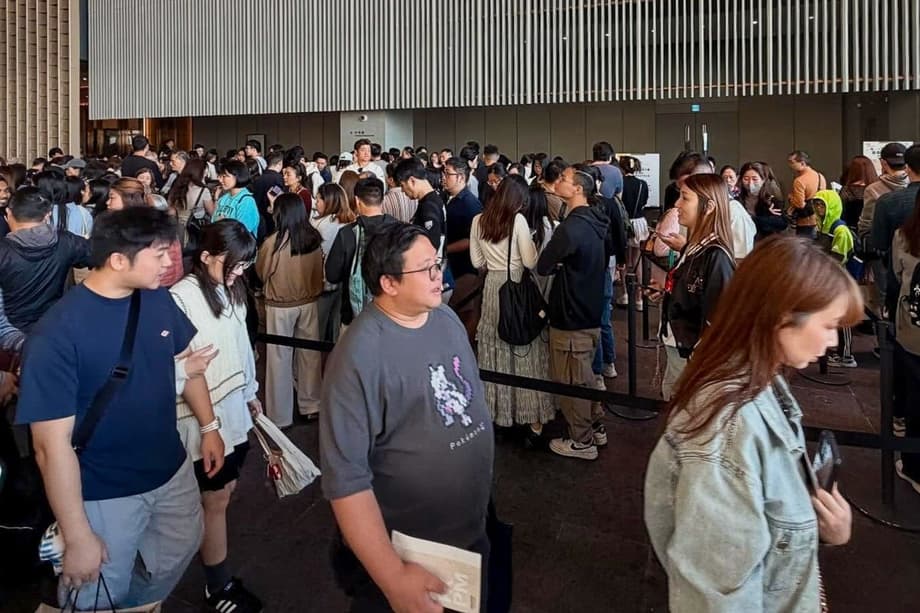Why the opening weekend turned chaotic
An opening weekend crowd surge at the Hong Kong Palace Museum’s Ancient Egypt Unveiled exhibition left many visitors stuck in confusing queues for hours, with some demanding refunds after failing to enter as planned. The museum issued an apology in the evening and said it would offer additional access for those affected. The incident highlighted the demand for a rare display of ancient Egyptian treasures in the city and exposed early strains in managing a large, eager audience.
- Why the opening weekend turned chaotic
- What the museum changed after the crowd surge
- Inside Ancient Egypt Unveiled
- Diplomacy, tourism and regional interest
- Visitor experience, refunds and practical advice
- What went wrong and how events like this can be managed
- What to watch through the nine month run
- Key Points
The show, which brings 250 artefacts from museums across Egypt, drew far more people than the museum could accommodate at once. On Saturday, staff halted on site ticket sales late in the morning to ease pressure and keep galleries safe. The pause was temporary. Later, the museum began selling a limited number of same day tickets and pressed ahead with a series of fixes designed to smooth the visitor experience and shorten lines.
A blockbuster debut meets operational strain
High demand is common when international exhibitions debut, especially when the objects are rarely seen outside their home country. The combination of pre booked visitors, same day buyers and curious passersby at a busy cultural district can overwhelm entry points. Queues lengthen when signage is unclear, when lines merge, or when visitors cannot tell where to stand for timed entry. Once inside, a slow moving crowd can cascade back to the entrance, causing delays at the door and frustration outside.
All of this played out against the backdrop of a landmark cultural moment for Hong Kong. The Egyptian Deputy Minister of Tourism and Antiquities, Yomna El-Bahar, attended the opening ceremony on Thursday, underscoring the profile of the show and the international partnership that made it possible. The exhibition is set to run for about nine months, giving the museum a lengthy window to refine operations and meet high public interest.
What the museum changed after the crowd surge
On Sunday, visitors reported a calmer atmosphere and more orderly lines. The museum said it suspended on site ticketing at around 11 am on Saturday to control the flow, then resumed same day sales at around 3:30 pm with a small release. It also extended closing time by two hours, keeping galleries open until 8 pm, and advised people to visit in the morning or early evening to avoid the afternoon peak. Those steps, combined with clearer queuing, helped reduce wait times for many who arrived with advance tickets the next day.
The museum asked anyone who had not yet purchased tickets to consider selecting another date and to buy online in advance. It also expects a large turnout over the entire run, estimating more than 700,000 visitors, and has said that additional access will be arranged for affected patrons from the disrupted opening day. That may include priority or special entry at later dates so that people who waited but missed out can still see the show they paid to attend.
How timed entry and visitor flow work
Museums use timed entry to spread demand across the day. Each time slot admits a defined number of people so galleries never exceed safe capacity. If many guests show up early or late, or if same day queues form without clear separation from timed entry lines, the system can clog. Staff then face the difficult task of upholding capacity limits while hundreds of visitors arrive at once.
Inside the galleries, one way routes, pacing points and wider aisles help maintain movement. Outside, separate lanes for online ticket holders and same day buyers reduce confusion. Clear signs, frequent announcements and real time updates on wait times give visitors confidence that the line is fair. When any part of that chain breaks down, small delays quickly become long waits.
Inside Ancient Egypt Unveiled
Beyond the early crowd crush, the exhibition itself is a major draw. Ancient Egypt Unveiled gathers 250 objects from seven Egyptian museums, including the Egyptian Museum in Cairo, the Luxor Museum, the Suez National Museum and the Sohag National Museum. It covers a vast timeline and range of materials, from statues and coffins to jewellery, musical instruments and everyday items. The run spans 20 November 2025 to 31 August 2026, giving residents and visitors many months to attend.
The curatorial team divides the show into four thematic sections: The Land of the Pharaohs, The Legend of Tutankhamun, The Secrets of Saqqara and Ancient Egypt and the World. Digital tools and multimedia moments aim to bring ancient craftsmanship to life for modern audiences. One installation uses projection mapping to suggest how the colossal statue of Tutankhamun might have looked in its original setting, helping people imagine the scale and colour of royal monuments.
Key artefacts and themes
Among the headline pieces are a towering statue of Tutankhamun and a seated statue of a scribe, reminders of royal authority and the administrative class that recorded the life of the court. Deities appear in many forms, including a statue of Bastet holding a sistrum and a seated figure of Anubis. Animal mummies and a striking hippopotamus sculpture speak to beliefs about the natural world and the afterlife. For visitors drawn to recent discoveries, the Saqqara section explores a necropolis that has yielded new finds in recent years.
The exhibition also aims to connect ancient Egypt with other cultures. It presents Egyptian artefacts in conversation with ancient Chinese objects, encouraging visitors to compare practices in writing, ritual, craft and state ceremony. This thread supports a larger agenda of cultural exchange that runs through the exhibition’s public programs and talks.
Diplomacy, tourism and regional interest
The timing aligns with strengthening cultural and diplomatic ties. Next year marks 70 years of formal relations between China and Egypt. Cultural collaboration is part of a wider relationship that includes trade and tourism. The museum’s partnership with Egypt’s Supreme Council of Antiquities follows a successful presentation in Shanghai, and the Hong Kong installment is expected to draw audiences from across the Greater Bay Area and beyond.
The West Kowloon Cultural District, where the museum sits, has become a hub for large scale shows and public events. With easy access to transit, it can handle big crowds, though even robust venues strain when tens of thousands converge on a single attraction at once. The museum’s expectation of hundreds of thousands of visitors over the run shows how much interest exists in ancient civilisations and supports Hong Kong’s broader push to be a center for cultural exchange in the region.
Visitor experience, refunds and practical advice
Many who queued for hours on Saturday asked for refunds. The museum apologised and said it would provide additional access for those affected. People in that situation can monitor official announcements for instructions on booking priority visits or dedicated timeslots. While details were not immediately published at the entrance during the rush, the museum indicated that it would contact or accommodate affected ticket holders so they do not miss the show.
For anyone planning a visit, advance purchase is the best way to reduce uncertainty. The museum has recommended visiting in the morning or early evening to avoid the busy afternoon period. If you prefer to try same day entry, be prepared for availability to change with crowd levels and expect ticket releases in small batches when capacity allows.
Planning your visit
- Buy tickets online in advance and choose a specific time slot. Aim to arrive within that window.
- Pick morning or early evening for the best chance of shorter waits, especially on weekends and public holidays.
- Check the museum’s channels on the day for real time updates on any suspension or resumption of same day sales.
- Use the correct lane at the entrance. Look for signs separating advance ticket holders from same day buyers.
- Travel light. Large bags slow security checks. Photography rules may limit tripods and flash.
- Allow time to explore the entire route. The exhibition is spread across multiple galleries with dense displays.
- If you were affected by the opening day queues, watch for the museum’s post about additional access arrangements and keep your purchase details handy.
What went wrong and how events like this can be managed
A sudden mismatch between demand and entry capacity likely drove the opening crunch. Three pressure points tend to determine whether a crowd day stays smooth or goes off track. First, clear and separate lines for different visitor groups. When timed entry and same day queues overlap, delays multiply. Second, steady pacing inside the galleries. If visitors bunch up at star objects, movement slows and the entry door must pause. Third, timely communication. People tolerate waiting when they understand how long it will take and what comes next.
There are proven fixes for each point. Separate lanes with large, plain language signs help visitors get into the right line quickly. Staff with handheld signs at decision points can redirect groups before congestion forms. A one way path inside reduces cross traffic and makes it easier to keep people moving without feeling rushed. Live updates on wait times, delivered at the plaza and online, give visitors options to step away for a break and return at the right moment. When demand spikes, temporary pauses in same day ticket sales protect the experience for those already inside and prevent safety risks at the door.
Many of these changes appeared on Sunday. The extended closing time gave the museum more flexibility to spread visitors across the day. A small number of same day tickets, released later in the afternoon, reduced the risk of a fresh surge. Reports from those with advance bookings pointed to more orderly queues and manageable waits. The museum will likely keep adjusting the balance between online bookings and same day releases as it learns from the first weekend.
What to watch through the nine month run
Demand will ebb and flow. Weekends, school holidays and late December are likely to be busy. The novelty of the first weeks may ease, then spike when public programs or holidays draw family groups. Over time, visitor flow usually steadies as people learn the best times to go and the museum fine tunes capacity. If you want a quieter experience, aim for weekday mornings, and check the museum schedule for any extended evening hours or special entry arrangements.
For the museum, sustained attention on real time communication, queue separation and steady gallery pacing will matter far more than one dramatic opening day. Ancient Egypt Unveiled is a long run with a rich content offering. With the initial crowd lessons applied, visitors should have a better chance to appreciate the objects without a stressful wait outside.
Key Points
- Opening weekend queues for Ancient Egypt Unveiled stretched for hours, prompting complaints and refund demands.
- The museum apologised and said it will offer additional access to visitors affected by the disruption.
- On Saturday, on site ticket sales paused at around 11 am, then resumed later with limited same day availability.
- On Sunday, lines were calmer. The museum extended closing time to 8 pm and advised morning or early evening visits.
- Advance purchase is encouraged. Same day tickets may be released in small batches when capacity allows.
- The exhibition brings 250 objects from seven Egyptian museums, with four thematic sections and digital displays.
- Organisers expect more than 700,000 visitors across the nine month run from 20 November 2025 to 31 August 2026.
- Clearer queue separation, one way gallery routes and timely updates are key to keeping future crowds manageable.












